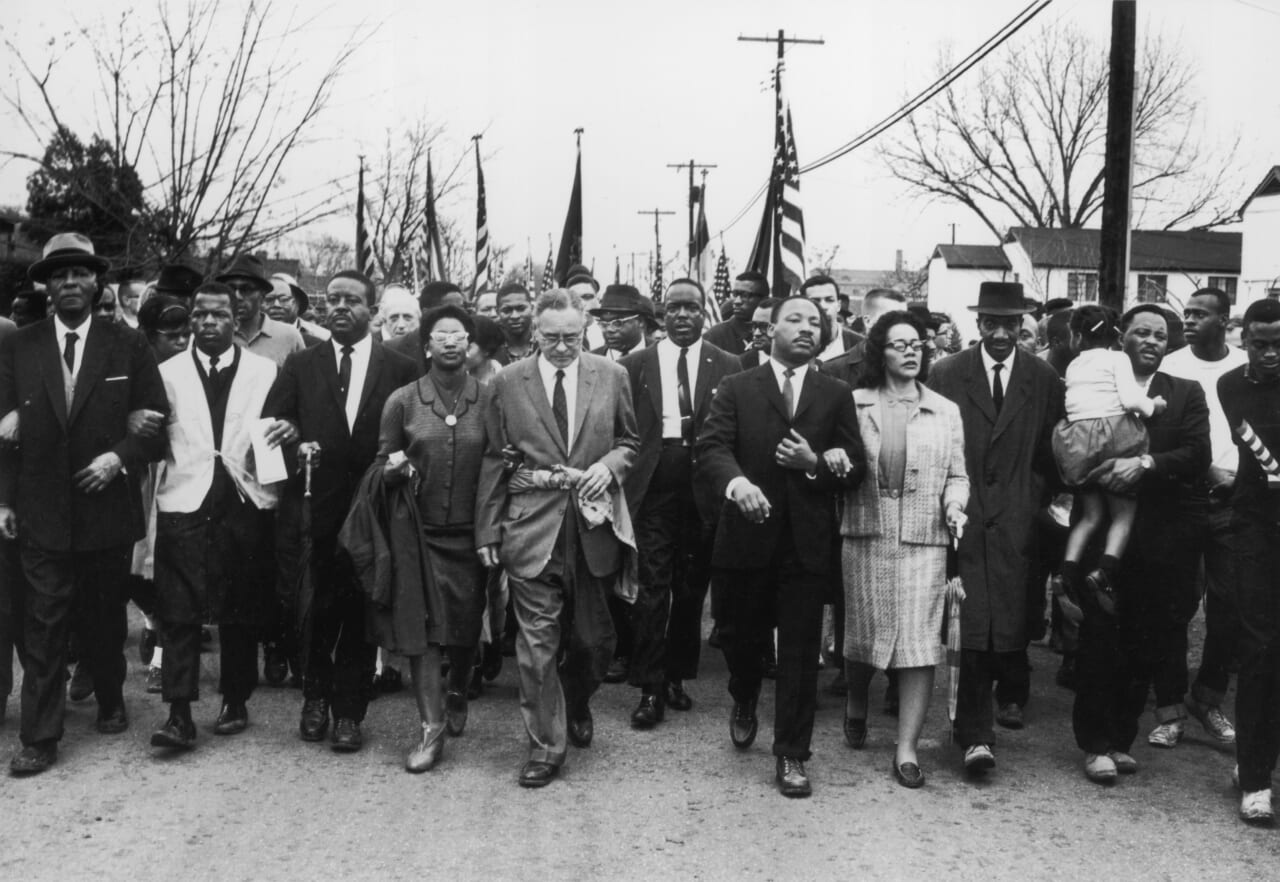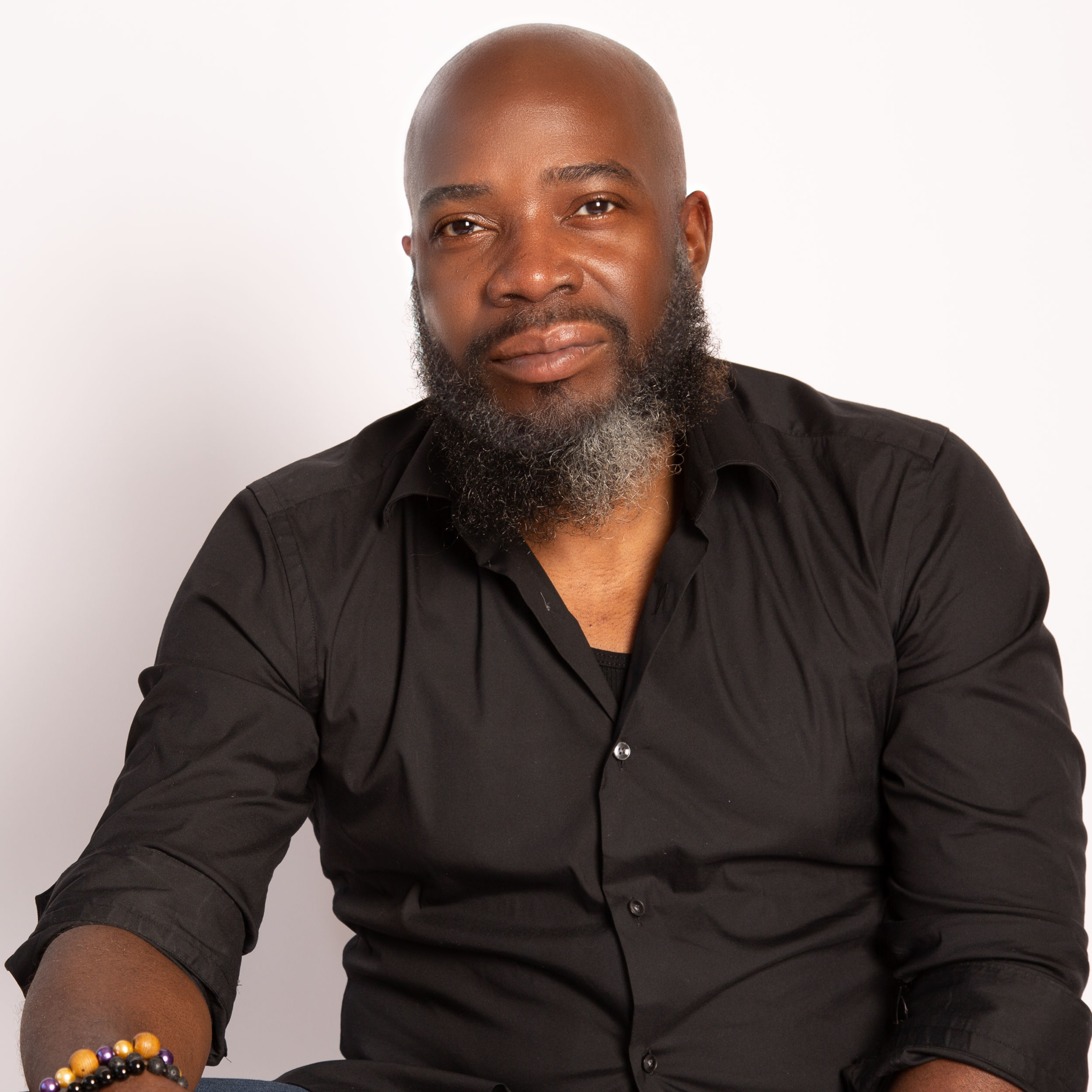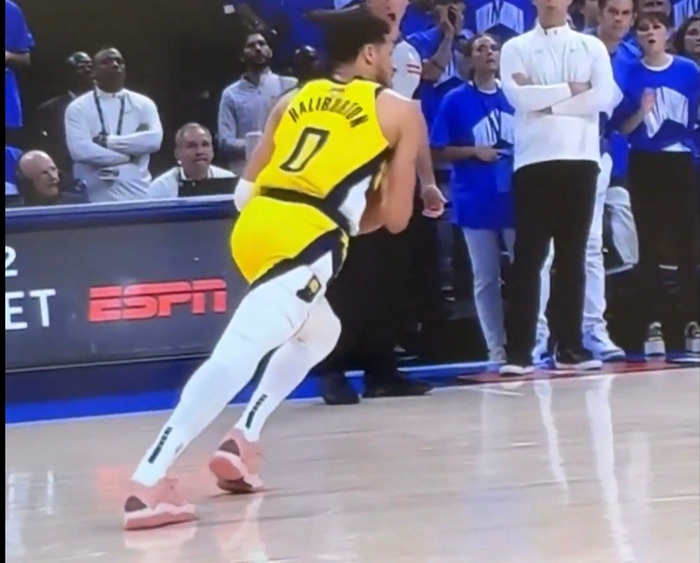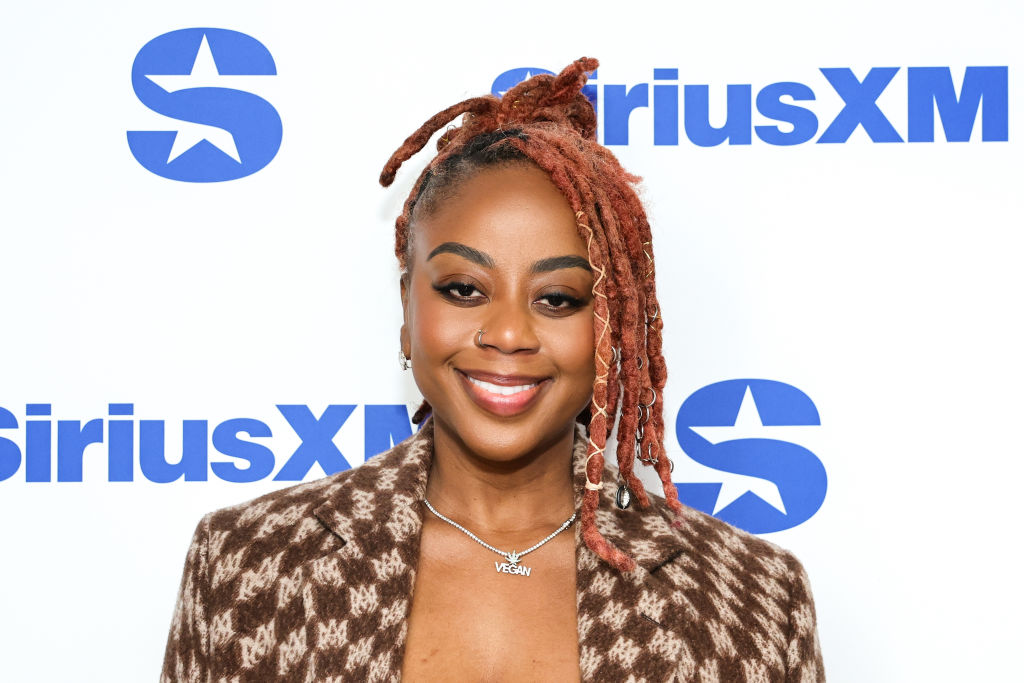Black History/White Lies: The 10 biggest myths about the Civil Rights Movement
OPINION: Part two of theGrio’s Black History Month series explores the myths, misunderstandings and mischaracterizations of the struggle for civil rights. The post Black History/White Lies: The 10 biggest myths about the Civil Rights Movement appeared first on TheGrio.

OPINION: Part two of theGrio’s Black History Month series explores the myths, misunderstandings and mischaracterizations of the struggle for civil rights.
Editor’s note: The following article is an op-ed, and the views expressed are the author’s own. Read more opinions on theGrio.
Because theGrio celebrates the legacy and the past of African America 364 days a year (to appease Ron DeSantis, we take a day off to celebrate white history), it’s always a difficult proposition to find new ways to celebrate Black History Month.
This year, instead of presenting interesting but meaningless nuggets of trivia like the first Black person to put hot sauce on chicken (Jerome Johnson in 1702), we decided to explore some of the misconceptions, myths and misunderstandings that created some of the popular, almost true narratives that many people believe.
Here are the 10 biggest myths about the Civil Rights Movement.
10. When the Civil Rights Movement began.
Depending on which whitewashed version of history you learned, the modern Civil Rights Movement either began in the late 1940s or the 1950s, when Black people all across the country suddenly realized that America was kinda racist and decided to do something about it.
In reality, the movement for equal rights under the law began much earlier.
Black abolitionists didn’t just criticize American-style slavery, they fought for equal protection under the law. As David Walker wrote in his revolutionary “Appeal to the Colored Citizens of the World”: “Why, I thought the Americans proclaimed to the world that they are a happy, enlightened, humane and Christian people, all the inhabitants of the country enjoy equal Rights!” After emancipation, Frederick Douglass’ “Composite Nation” demanded: “A Government founded upon justice, and recognizing the equal rights of all men.”
The post-Emancipation law that protected Black Americans was literally called the “Civil Rights Act of 1866.” Plessy v. Ferguson, the Supreme Court case that challenged segregation and resulted in the “separate but equal doctrine,” was organized by a “civil rights” organization – the Citizens’ Committee to Test the Constitutionality of the Separate Car Law. In 1868, Black activists from South Carolina created the “first, free, compulsory, statewide public school system in America” specifically to protect “civil rights.” All Black movements were about civil rights because “white citizens are wedded to any method however revolting, any measure however extreme, for the subjugation of the young manhood of the race,” wrote Ida B. Wells, the anti-lynching movement’s most famous activist. “They have cheated him out of his ballot, deprived him of civil rights or redress therefore in the civil courts, robbed him of the fruits of his labor, and are still murdering, burning and lynching him.
The Civil Rights Movement began the day Black people stepped foot on American soil.
9. Marching was an acceptable form of protest.
Partly because of how our education system sugarcoats the past, the myth of the “civil rights march” has become one of the most persistent, widely accepted fantasies in the folklore of Black history.
Civil rights protests were supposed to be defiant acts of civil disobedience and were met with disapproval by most white Americans. In 1966, 54% of whites felt they were “not justified.” And, while the civil rights demonstrations are currently painted as a multicultural effort, very few whites participated and most disapproved. Furthermore, the people who participated were usually marching to do something. The civil rights activists who left Selma on March 7, 1965 were headed to Montgomery to confront Alabama Gov. George Wallace about police brutality and voting rights. The March on Washington was not just a mass protest; the 200,000-plus demonstration was part of a political lobbying effort that forced President Kennedy to meet with the leaders to hear the 10-point list of demands from Black Americans. The Birmingham, Ala., kids who marched in the 1963 Children’s Crusade were headed to talk to the mayor about segregation when they were attacked with police dogs and fire hoses. Two weeks earlier, sitting in a Birmingham jail, Martin Luther King explained that upsetting people was part of the goal, writing:
You may well ask, “Why direct action, why sit-ins, marches, and so forth? Isn’t negotiation a better path?” You are exactly right in your call for negotiation. Indeed, this is the purpose of direct action. Nonviolent direct action seeks to create such a crisis and establish such creative tension that a community that has consistently refused to negotiate is forced to confront the issue… So, the purpose of direct action is to create a situation so crisis-packed that it will inevitably open the door to negotiation.
Speaking of King …
8. Martin Luther King Jr. was a beloved civil rights leader.
While Martin Luther King Jr. is a beloved icon today, most white Americans did not feel the same way about King when he was alive.
King finished second in a 1964 Gallup poll of the least respected Americans and, less than 18 months before he was assassinated, only 36% of white Americans thought King was “helping the cause of Negro rights,” according to a December 1968 Harris poll. Even his death didn’t alleviate the animus against him. When King died, 31% of Americans said he “brought it on himself.” Twenty years later, the country was still split on whether King deserved a federal holiday (47% in favor vs. 48% against).
But America’s love for King hasn’t just evolved, his legacy has been whitewashed to make him the de facto leader of the entire Civil Rights Movement. While King was perhaps the most well-known leader of the era to whites, he was just one of many organizers who led the fight. And, in many cases, his approach to civil rights was rejected. Activists in the youth-led Student Non-violence Coordinating Committee refused to be the youth arm of King’s Southern Christian Leadership Conference, partly because they felt he “parachuted into a community, unprepared for the long-term work that organizing for meaningful change requires.” When King rejected an offer to join the Freedom Rides, NAACP leader Robert F. Williams suggested that King remove himself “from the vanguard” if King “lack[ed] the courage.”
None of this diminishes King’s legacy. Even those who disagreed with him almost universally acknowledged his genius and leadership. The point is that the Civil Rights Movement, like most of history, is messy. The fight for equality was not a tidy campaign with a singular, heroic figure at the top. Its success was due to the collective effort of Black people and our ability to unite for a common goal.
7. A boycott desegregated buses in Montgomery, Ala.
On June 22, 1954, a bus driver in Columbia, S.C., punched Sarah Mae Flemming for sitting in the white section of his bus before she was forcibly removed.
When Rosa Parks was ousted from a Montgomery, Ala., bus nearly 18 months later, she wasn’t in the whites-only section; she was in the middle of the bus in the first come-first serve section. But, according to the rules in Montgomery, white people owned all of the seats. And, although Parks’ actions sparked the Montgomery bus boycott, it did not desegregate the city buses. By the time Parks took action on Dec. 1, 1955, more than a half dozen Black women had been arrested for intentionally flouting the city’s segregation rules, including Claudette Colvin, Aurelia Browder, Susie McDonald and Mary Louise Smith.
On behalf of the women (excluding Parks), the NAACP filed a successful lawsuit against Montgomery Mayor William A. Gayle, the chief of police, the bus drivers and the bus company. The city appealed and, on Dec. 17, 1956, the U.S. Supreme Court rejected the appeal to hear Browder vs. Gayle, citing the already established precedent of Flemming vs. SCE&G.
While the Montgomery bus boycott was an important act of solidarity and organizing, it was the bravery of individual Black women and their subsequent legal fight that ended segregation on Montgomery buses.
6. Republicans supported civil rights; Democrats didn’t.
That’s just wrong.
I’m sure you’ve heard a version of this staple of the GOP’s historical revisionism. The truth is much more complex. First of all, party politics doesn’t adequately encompass the opposition to the Civil Rights Act of 1965. When you break down the votes to the landmark legislation of the civil rights era, it shows that the opposition to the bill was mostly along geographic lines, mostly because the bulk of Democratic legislators were from Southern, Jim Crow states.
In the House of Representatives, 91% of Southern Democrats and 100% of Southern Republicans voted against the Civil Rights Act. Only three Southern senators supported the final version of the bill; one Democrat and two Republicans. Meanwhile, the bill had more support from Democrats who were not from the Jim Crow South than Republicans from outside the South. A Democratic president signed the bill into law.
This pro-GOP narrative also excludes anti-civil rights lawmakers like Strom Thurmond who left the Democratic Party and joined Team Republican. It erases the history of the anti-Black “Lily White” faction that took control of the Southern GOP. It forgets about the “white primaries” that were used by the GOP when white politicians began losing primaries because of Black voters. It ignores the history of the Black policymakers who forced Franklin Roosevelt to include Black Americans in the political agenda. It obscures Executive Order 8802, the Black Cabinet and the gains made on behalf of Black Americans. And of course, we never mention that a majority of Black voters have voted for the Republican candidate in every election since 1936.
But who’s counting?
OK, I am.
5. Brown vs. Board of Education desegregated schools.
This one’s easy.
First of all, the Supreme Court decision known for ending race-based segregation in K-12 schools should have never been named Brown v. Board of Education. It should actually be called Briggs v. Elliott, which was the first of the five combined cases that overturned the “separate but equal” doctrine. But if you’re not from South Carolina, then you’ve probably never heard the conspiracy theory involving a racist ex-Supreme Court justice and the controversy over why the case was named after a Topeka, Kan., school district. Interestingly enough, the parents in the Kansas case were the only plaintiffs who specifically wanted their children to attend a whites-only school; in the other cases, Black parents argued that their children were forced to attend unequal schools.
In any case, the 1954 decision that should be known as “Briggs” didn’t desegregate public schools. While the SCOTUS ruled that segregation was unconstitutional; white people largely ignored the decision and kept their lil’ institutional racism thing going. South Carolina didn’t start its desegregation process until 1963. States like Mississippi and Virginia started “massive resistance” movements that defied the Supreme Court decision for 15 years. Even today, most Black children attend schools that are segregated by color. Nationally, white children are a minority population in the public school system, but 77% attend majority-white schools. Majority non-white school districts receive $23 billion less in funding than their majority-white counterparts. Yes, America’s education system is still separate and unequal.
To integrate is “to form, coordinate, or blend into a functioning or unified whole,” or “to end the segregation of and bring into equal membership in society or an organization.” Integration is defined as “incorporation as equals into society or an organization of individuals of different groups.
When did that ever happen?
4. The Civil Rights Movement changed the hearts and minds of white people.
Contrary to popular opinion, the Civil Rights Movement didn’t convince Americans to reject the evils of segregation and racism. To be fair, changing white people’s minds was never the point of the Civil Rights Movement; it was about changing the law.
Before the passage of the 1964 Civil Rights Act, most white Americans had unfavorable opinions of the Freedom Riders, sit-ins and the March on Washington. A year after the Civil Rights Act passed, 54% of whites still felt civil rights protests were “not justified” and 85% felt demonstrations “hurt the negro.” A decade after Brown v. Board, 51% of whites said they wouldn’t send their children to a school with an equal number of Black and white students; the same percentage as in 1954.
And it’s not just about politics. In 2016, 42% of white Republicans and 24% of white Democrats felt that Black people were lazier than whites. About 58% of white Americans said “little or nothing needs to be done” to ensure racial equality.
3. The Civil Rights Movement was nonviolent.
Interestingly, even at the time, whites largely viewed the movement as nonviolent. In 1965, only 21% of white respondents agreed that “negroes used violence in their demonstrations.”
Still, there was plenty of violence.
To be fair, most of the violence during the civil rights era came from whites. Martin Luther King Jr, Medgar Evers, Addie Mae Collins, Denise McNair, Carole Robertson and Cynthia Wesley are just a few casualties of civil rights violence. The state troopers in Selma used violence. So did the Klan members who attacked Freedom Riders and the people who murdered voting activists.
And, although we’ve ingested the fairy tale narrative of passive activists willing to take anything, armed resistance was as prevalent as nonviolent resistance. Medgar Evers carried a gun when he registered to vote. Organizers with the Lowndes County Freedom Movement always kept a gun on their hips. “I never was a true believer in nonviolence, but was willing to go along [with it] for the sake of the strategy and goals,” explained SNCC field secretary Cynthia Washington. “The thought of being beaten to death without being able to fight back put the fear of God in me … So, I acquired an automatic handgun to sit in the top of that outstanding black patent and tan handbag that I carried.”
The movement was not about “nonviolence,” nonviolent resistance was a protest tactic used by some organizers during demonstrations.
2. The Civil Rights Movement helped Black people.
The Civil Rights Act and the Voting Rights Act are the most-mentioned byproducts of the movement. However, this era of Black organized resistance created numerous laws, judicial decisions and executive orders that helped all Americans.
The Civil Rights Act of 1964 is the basis for current laws banning sexual harassment; LGBTQ discrimination and antisemitism. The 1965 Immigration and Nationality Act was the direct result of the Civil Rights Movement and opened up pathways for immigrants from all over the world. The Equal Credit and Opportunity Act made it illegal to discriminate on the basis of race and sex, consequently making it possible for women to open bank accounts. King’s Poor People’s Campaign helped push the Social Security Amendments of 1965, which created the civil rights program now known as Medicaid and Medicare. The Civil Rights Act of 1968 offered legal protections for Native Americans, pregnant women and people with disabilities. Free school breakfast exists because of civil rights activists. Adult education funding and English as a Second Language are civil rights programs. If the freedom fighters in Alabama had not filed NAACP v. Alabama, the freedom of association wouldn’t have been protected by the First Amendment. Every union member in America benefits from one movement.
The gains made during the civil rights era didn’t just help Black people; they helped America.
You’re welcome.
1. The Civil Rights Movement ended.
Did racism end? Did white supremacy end? Did whiteness end?
Segregation never ended. America is still plagued by discrimination in the criminal justice system. Voter disenfranchisement is still going on. So is police brutality and all-white juries and employment discrimination and housing inequality and underfunded Black schools and attacks on Black history and wage discrimination and institutional bigotry and social prejudice and financial exclusion and everything that the Civil Rights Movement fought against.
The fight for equality, humanity and justice is not a movement.
As long as Black people live and breathe and exist, history shows that there will always be an organized effort to take back everything that the blood, sweat and unquenchable spirit of Black Americans managed to manifest into reality.
And we will always be here.

Michael Harriot is an economist, cultural critic and championship-level Spades player. His New York Times bestseller Black AF History: The Unwhitewashed Story of America is available everywhere books are sold.
Never miss a beat: Get our daily stories straight to your inbox with theGrio’s newsletter.
The post Black History/White Lies: The 10 biggest myths about the Civil Rights Movement appeared first on TheGrio.












